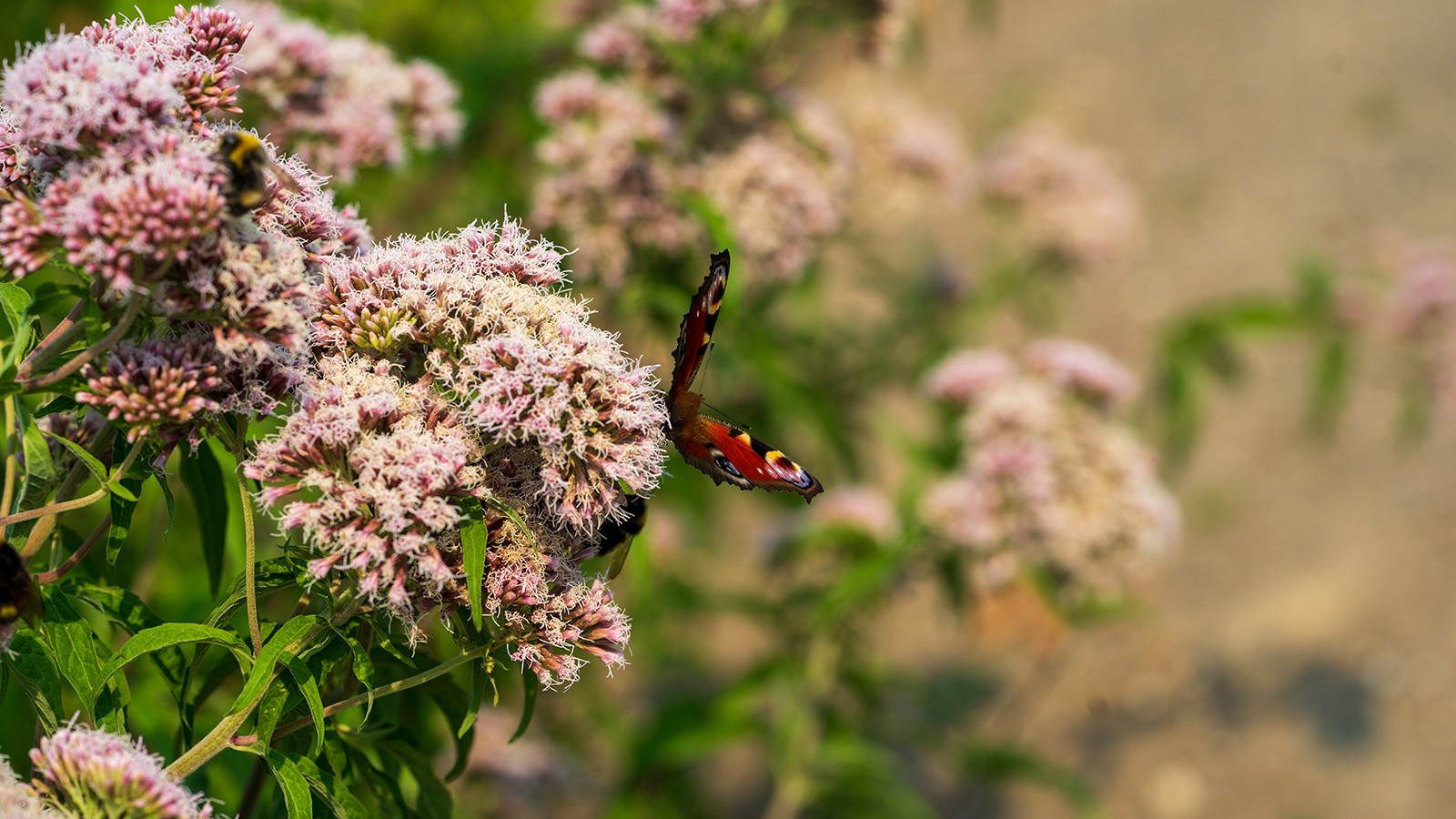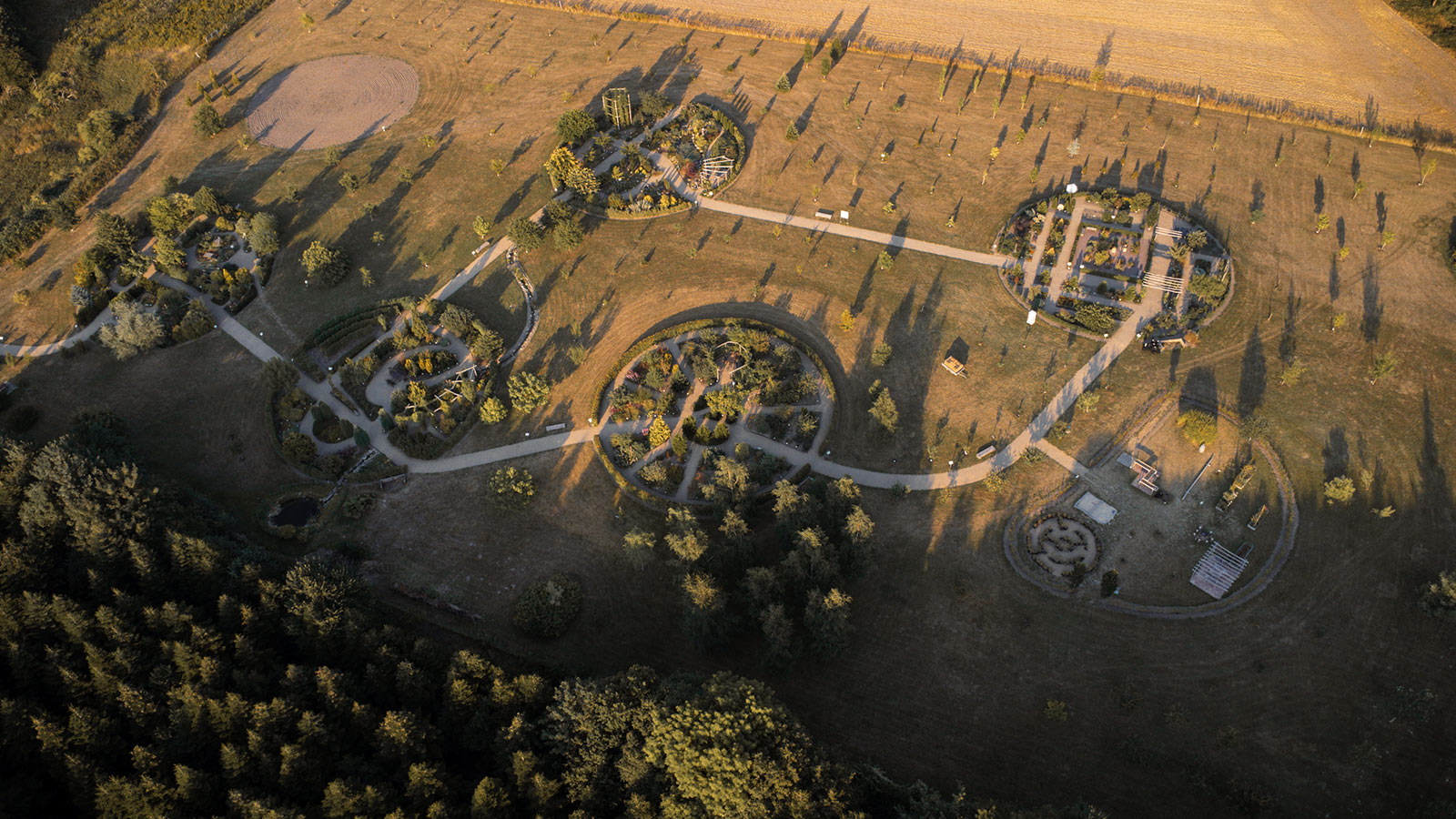
The Medicine Gardens in Tranekær
Medicinhaverne in Tranekær has the largest collection of medicinal plants in Northern Europe with more than 800 different plants.
In the Medicine Gardens, there are plants for people with foot sweat, for those who need to urinate and for those with a sore throat. Some plants grow wild in nature, some are common in private gardens, some are not particularly well-known, but what they all have in common is that they have or have had medical significance.
Experiences for the whole family
As medicinal plants can be poisonous, we ask our guests not to touch or taste the plants. In the Children's Medicine Garden, however, it's just the opposite. Here, we encourage you to taste everything. Here, all plants are edible. You can also splash around with water, find your way around the little blackcurrant maze and compete to see who can balance the best. There's a sandpit for the youngest and a willow hut where you can keep a cosy troll company. In all the gardens you can go on an owl hunt. The clever owls ask questions and the answers can be found somewhere in each garden.

Six themed gardens and an arboretum
The medicine gardens consist of six round themed gardens of 800 square metres each. The gardens are located in a three to four hectare area with an arboretum with more than 100 different trees with medical significance. The first garden you come to is "Respiration and Circulation", which in addition to a lot of medicinal plants also contains a fragrance section with many beautiful fragrant roses. In "Urinary and Genital Pathways", which has a small stream running through it, you can see the very special fruit of the akebiaplant in the summer. This garden also has a small vineyard with green, blue and red grapes. In "Digestion, Metabolism and Nutrition" you can find some old - and very healthy - vegetable varieties grown with seeds from the Nordic gene bank, and there are also 10 apple trees exclusively with apple varieties from Langeland, including the Beauty from Langeland. "Infections and Hildegard's Garden" is laid out as a monastery garden with many of the plants described by the nun Hildegard von Bingen (1098 - 1179). Signs by each plant feature a translation of Hildegard's original text, and it's certainly not boring. In the centre of the Hildegard garden, there is a large tub with a wooden cone that the water quietly trickles down. The cone was made by the Funen-based company GURO. And the wood from which it was sawn comes from the forests of Tranekær Manor. In "Nervous System and Musculoskeletal System" there is a small pond with water lilies, and the garden also contains an impressive bumblebee cave. The newest themed garden was added in 2023 and has the theme The Five Senses, where you can find wild edible plants from forests, fields and beaches.
All plants in the individual gardens and trees in the arboretum are labelled with signs explaining the plant/tree's name in Danish and Latin, its medicinal significance and country of origin.
You can bring food to eat in the gardens. There are tables and chairs/benches in all the gardens. And in case of wet or cold weather, you can take shelter in the pavilion, located in the arboretum just inside the white gates. In the barn, to the left of the green gate, there is a disabled toilet.

All plants in the individual gardens and trees in the arboretum are labelled with signs explaining the plant/tree's name in Danish and Latin, its medical significance and country of origin.
You can bring food to eat in the gardens. There are tables and chairs/benches in all the gardens. And in case of wet or cold weather, you can take shelter in the pavilion, located in the arboretum just inside the white gates. In the barn, to the left of the green gate, there is a disabled toilet.
Medicinhaverne is run entirely by volunteers. All income goes towards the operation and development of the gardens. There is no manned ticket sales, you pay yourself, either in cash or with MobilePay in the payment pavilion.